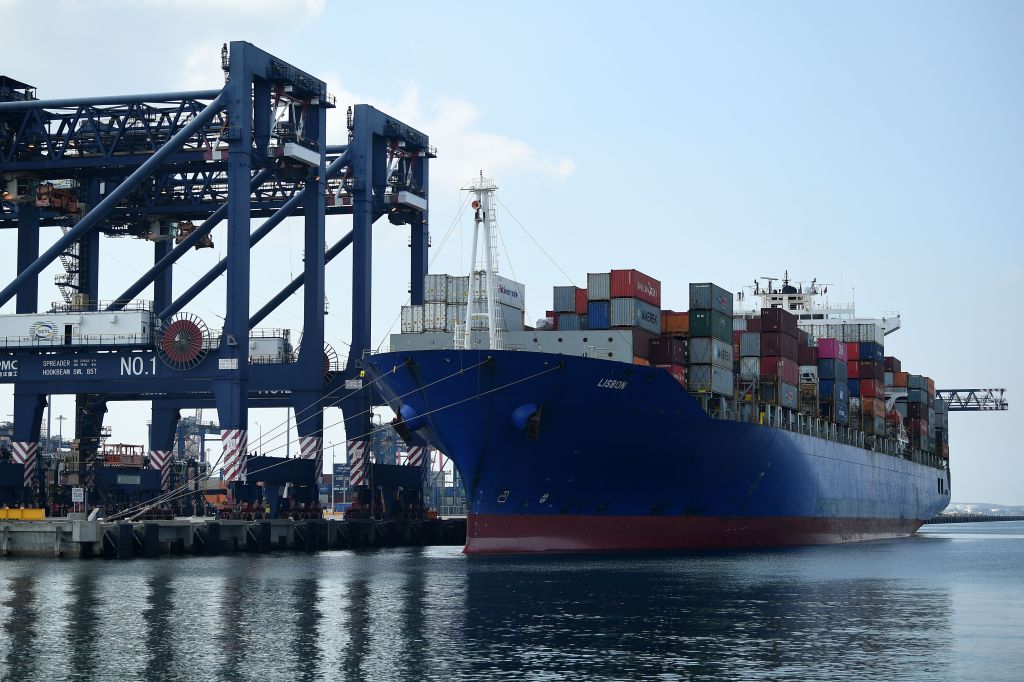[ad_1]
With the coronavirus shutdown still ongoing, ARTnews has been interviewing experts in diverse fields related to art collecting and the care and of collections, to hear how they are affected by the pandemic.
There is nothing like shipping and storage to remind collectors of the intransigent objecthood of most artworks. During the coronavirus shutdown, art logistics companies that specialize in shipping, handling, and storage have been facing an unprecedented situation.
Jonathan Schwartz is the CEO of fine arts logistics company Atelier 4 and the chairman of the International Convention of the International Convention of Exhibition and Fine Art Transporters, a trade group comprised of 75 companies representing 34 countries. In that latter capacity, he has spent the past couple of weeks calling his colleagues, to offer support and tips.
One major issue, Schwartz said, is that there has been an asymmetrical response in the art world. While museums and institutions have been eager to comply, legally and ethically, with the guidelines that are coming from state and local government, the commercial sector has been somewhat more eager for action on the art shipping front. In one recent instance, Schwartz said, he was surprised that a client was able to get something shipped to Atelier 4’s warehouse, given New York Governor Andrew Cuomo’s announcement that New York City would be shut down through mid-May. Generally, Schwartz said, if the art being shipped is not part of a household move—which is considered an essential service—the trucks shouldn’t be on the road.
When New York shut down in late March, there was a lot of unfinished business. “There was a bunch of deliveries we were supposed to make to collectors and we had to freeze them,” Schwartz said. “There were Armory Show shipments that were frozen, and are now in our storage. Of course we need to get paid for things, but I’m pretty sure we have to forgive a lot of this stuff. There is no way we would turn this into a profit center when the rest of world is struggling.”
Atelier 4 has a skeleton crew working at its facility, making sure that the climate control systems are running and ensuring security in addition to video surveillance. At this difficult time, Schwartz has one word for collectors: “patience.” (Most collectors, he said, are fairly understanding.) And that piece of advice ought to be well-heeded, as not all collectors have halted their art-buying habits. With galleries switching to online viewing rooms, many collectors are staying active, carrying out transactions in virtual space. And yet, Schwartz likes to remind them, “Even with the digitization of the collector experience, there will still need to be the transport of work.”
In the U.S., the situation grows even more complicated. Different states have different provisions related to the coronavirus shutdown, and the definition of what constitutes an essential service varies widely. In New York, it is fairly clear that art shipping is not considered an essential service, however Schwartz has heard of an instance in which a company that does security transports—which are considered essential—was able to ship work through its art-handling arm. Schwartz and his fellow shippers are allowed to operate in Florida, through a loophole in that state, however he is advising against it—arriving there with New York plates could be a real liability.
Melissa Osterwind, COO of SRI Fine Art Services, which is headquartered in New Jersey, said her company caters to private collectors, and that one of the biggest issues her clients are facing is personal loans of artworks to institutions. “They are kind of stuck at the moment,” she said. “We are walking people through understanding that we are in newfound territory.”
Osterwind warned that the world might not return to its pre-coronavirus state anytime soon, as things as basic as the price of air travel are in flux. “Rates that were easy in January are now four or five times the price, and that’s huge sticker shock for people who want to be conservative, or for institutions that have really tough financial losses,” she said.
How to mitigate that? Osterwind said one way is to talk with companies like hers who can make suggestions for how to deal with the new reality. “The things we suggest might take longer, but they also might be more cost-saving: storing the art somewhere while waiting for air freight prices to modify and more flights to get online.”
Another area of concern once things open up, Osterwind said, will be decontamination. The current understanding that the virus can stay on wood for four days has implications for art shipping. “Before [art] goes in a home we might want to consider keeping it in a holding area where it sits for five days, let’s say, just to make sure no risk to the consumer,” she said, adding, “‘I need this tomorrow’ may not be what is best for those things at the moment.”
Osterwind is thinking about setting up a decontamination area in SRI’s warehouses, and is gearing up for a reopening by ordering extra hand sanitizer and pumping stations and extra gloves and masks for her facilities. When the stay-at-home order came down, she donated their supplies to hospitals—they had nitrile gloves and N95 masks. She is replenishing with supplies that are not medical grade.
The push to digitize is affecting how Osterwind has been thinking her business, and about how it can serve its clientele, which includes galleries. She is noticing a push to digitize among people who want to document their collections for inventory and, of course, galleries that want to do online sales. “People are thinking about how this shutdown could happen again in the fall,” she said. “They want to have that switch ready if they have to move from brick-and-mortar to the online space.” SRI has two viewing rooms that are “perfect for photography,” she added, and can be used to allow collectors to view artworks remotely.
[ad_2]
Source link


